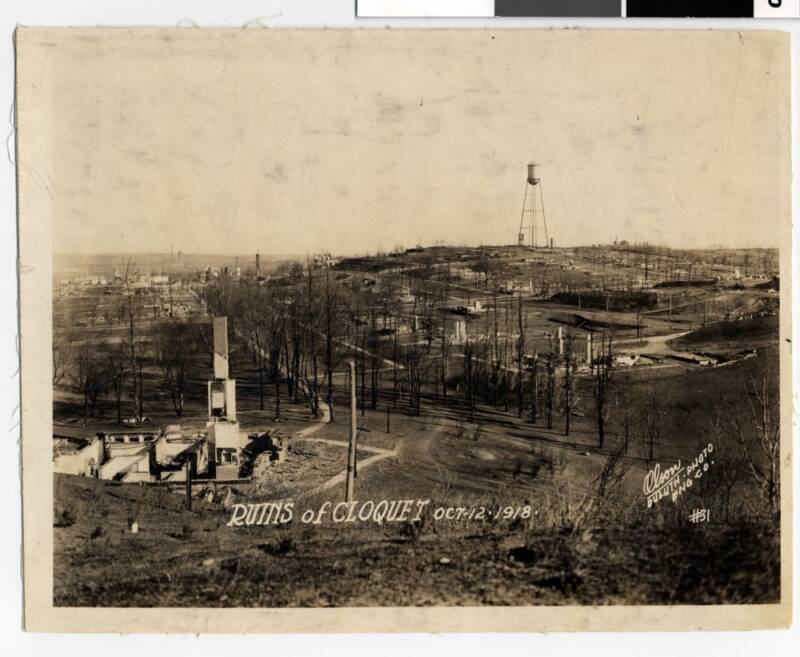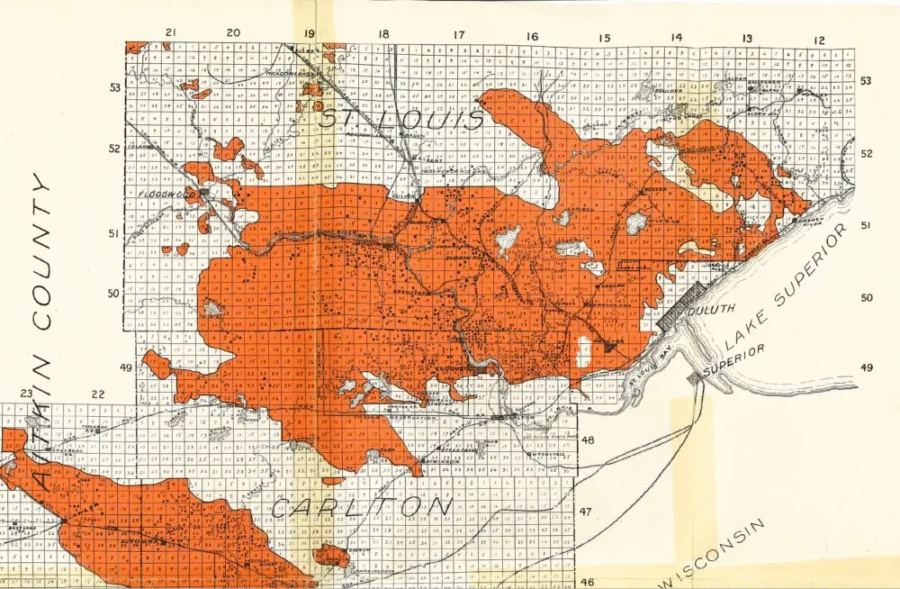The Cloquet and Moose Lake Fires, The Deadliest Wildfires In Minnesota History

Minnesota Digital LibraryThe town of Cloquet after the devastating 1918 fire.
Minnesota’s deadliest wildfire — and the second-deadliest fire in U.S. history — started on Oct. 10, 1918. Sparks from a passing train ignited the dry grass near Cloquet, and the smoldering embers soon turned into a massive wildfire.
Similar to the Great Hinckley Fire, the Cloquet-Moose Lake Fire was made all the more dangerous by a series of smaller wildfires combining into a roaring inferno. Over 52,000 people were affected by the disaster, and 453 residents of northeastern Minnesota lost their lives. The towns of Cloquet, Brookston, Kettle River, and Moose Lake were almost completely destroyed.

Public DomainA map of the 1918 Cloquet and Moose Lake fires.
As the blaze approached Moose Lake, many people tried to escape by driving down Highway 73. There was a sharp curve in the road, and a mix of low visibility from the smoke and high speeds caused more than a dozen cars to drive right off the highway. It’s reported that at least 25 people died in these crashes.
Other residents walked straight into Moosehead Lake to avoid the flames. According to the Minnesota Digital Library, one survivor later recalled:
“We all dipped blankets in the lake and wrapped them around our bodies and over our heads so cinders and flying sparks could not hurt us. It made for a ghostly sight. We walked into the lake as far as we could, holding the younger children about us… It was the most frightening sight I’ve ever seen. The fire engulfed the town. We tried not to look but we couldn’t help but watch our town disappear before us.”
In addition to being the deadliest wildfire in Minnesota history, the event is considered Minnesota’s worst natural disaster in terms of the number of deaths in a single day.





